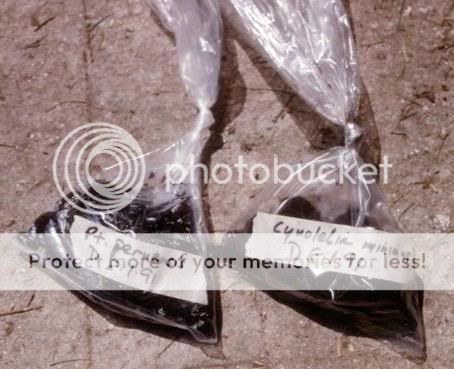Hi Fella,
Firstly there are different collecting locations for N. eggersi. Please be sure of your site codes before passing any fish/eggs on.
And yes you are quite right there are easier Nothos to begin with, but there is simply no reason if your not completly new to killis why you cannot try your hand at these little gems from Tanzania.
There are also some colour variants namely blue and red. I think red is the much nicer option.
being a rather small Notho. I would set them up in an bare bottomed 18"x8"x8" all glass tank with 1 male to 4 females.
Add a small air driven sponge filter and a heater/stat set to 25-26'C and a pH of around 7.5 add a small teaspoon of cooking salt (to guard against velvet)
I spawn Nothos with peat in margarine tubs weighted down with a stone or similar object. I use only Irish Moss peat not Sphagnum moss peat.
I leave a bucket full of water outside and throw handfuls of peat into this. It will float initally but eventually sink. The water will be very brown but keep running this off and replenish it with fresh weekly until clear, the peat is now ready for use. Place a good handful in a margarine tub as above and place the lid on it make some tiny holes in the lid to let water in and air out. After about 1/2 an hour remove the lid and the peat should remain for the most part in the container. When the fish settle and start to produce eggs then you will get some overspill onto the tank floor (unavoidable)
The fish should be fed well on livefoods for the best results (culture your own or buy) Cleanliness is of upmost priority in such a small tank so perform waterchanges on a 3-4 day basis and syphon off any uneaten food soon after feeding.
The group will lay many eggs over the week and I gather the peat up on a weekly basis and pour it into a net and squeesed to get rid of access water. Lay this out on some newspaper or kitchen roll and allow it to dry a little to the consistancy of rolling or pipe tobacco (moist but not too wet) Replenish the marg. tub with fresh peat.
Now place the egg laden peat in a fish bag with most of the air expelled (store at 25'C) and label with the species name, date collected and date expected which should be around 3-4 months but could possible be shorter with a higher incubation temp. (6-8 Weeks)

A good instrument to have handy is a good large magnifying glass. Check you peat after the alloted time and look for the eggs, they will be hard to see but they are there alright. When you come across the eggs look closely you will be able to see the fully formed eye which will have a bright ring around it, this tells you the eggs are ready to hatch. I place the peat in a white coloured plastic ice-cream tub and cover with coolish water 22'C and 1" depth and float this in the parent tank. The fish will hatch almost immediatly, I then transfer the fry to another tub using a glass eyedropper and start to feed. I like to start all my Notho fry on infusorians so you will have to make provisions for this. From there they go to Newly hatched brineshrimp, microworm then to Grindalworm, Whiteworm and Vestigal Winged or wingless fruitfly. After a day or so of collecting fry then redry the peat as before (all fry wont hatch on first wetting) and store as before for a week and then wet it once more.
Perform waterchanges in the fry tub/s very regularly.
As the fry grow increase both the size of container and the water depth. They will sex out pretty quickly so you can then seperate the males from the females and raise accordinly. You may be able to coax them to eat some frozen but in my experience they prefer livefood.
It wont be long before you have loads of these. You may lose some batches in the begining but practice makes perfect as they say.
You should get between 12-16 months out of individual specimens.
If I have left anything out then please just ask.
As for obtaining inital stock well try
Sam (German Breeder) at
[email protected]
As for the water I use RO and tap mixture. You can get a small 36 gallon a day unit for cheap
http /www.ro-man.com/shop/product_info.php/products_id/35
/www.ro-man.com/shop/product_info.php/products_id/35
I hope this went some way to helping you out.
Regards
BigC



 /www.ro-man.com/shop/product_info.php/products_id/35
/www.ro-man.com/shop/product_info.php/products_id/35

